Cultured Pearl Market Update
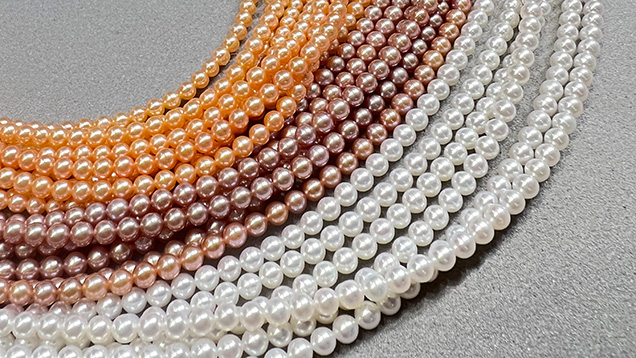
At the AGTA show, we spoke with several pearl dealers to acquire some insight into the current cultured pearl market. With demand for pearls trending upward in the secondary market, as reported by The Real Real in its Luxury Consignment Report in January 2023, it was easy to spot similar trends in other areas of the pearl market as well.
Bead cultured (BC) pearls are the result of the deliberate insertion of a bead nucleus along with a small piece of mantle tissue into the gonad of a living host mollusk to start the growth of the cultured pearl, a process known as nucleation or grafting. Non-bead cultured (NBC) pearls need only a piece of tissue implanted into the gonad or mantle of a host mollusk to form. A technique originally developed and successfully operated in Japan before adoption by other global operations including Australia, the Philippines, Indonesia, French Polynesia, and China, the nucleation process is intricate and requires expertly trained technicians.
The pearl industry, like others, was adversely affected by the COVID-19 pandemic. Many dealers noted a supply shortage of the main types of cultured pearls: South Sea, Tahitian, akoya, and freshwater. According to dealers, many pearl farms, especially Tahitian, use Chinese and Japanese technicians to perform the critical nucleation step. Due to travel restrictions and border closures during the pandemic, many experts were unable to travel to these locations, resulting in smaller harvests since 2020. In some farming areas, there were not enough employees on-site to keep the mollusks in good health, and thus the mortality rate was high. Assuming grafting returned to normal levels by 2022, a greater influx of supply is expected in 2024, given the typical 24-month growth periods. Some dealers added that strong demand for cultured pearls from Chinese and other Asian consumers is contributing to the current global shortage.
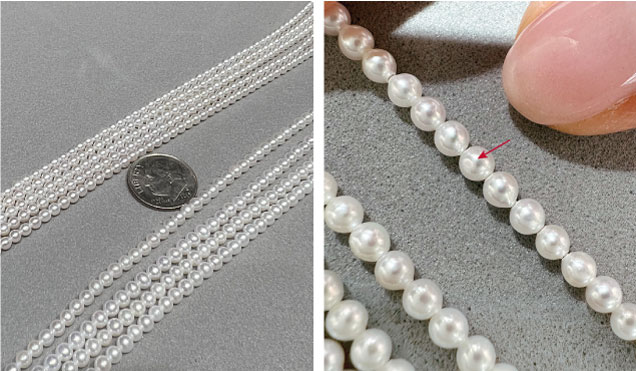
Small freshwater BC pearls from China (approximately 2–4 mm) were more widely available at the show than in past years, in near-round to round shapes and in various colors including white, pink, purple, and orange (figure 1). Freshwater cultured pearls of this particular size are typically NBC, normally oval (a potato-like shape), and can look similar to white saltwater Japanese akoya BC pearls of the same size. However, Gina Latendresse of American Pearl Company Inc. (Nashville, Tennessee) demonstrated that upon closer inspection, the freshwater pearls more often show a rounded flat surface feature on an otherwise spherical pearl, a feature usually too small to affect basic shape (figure 2). This feature is also occasionally observed in other types of freshwater cultured pearls.
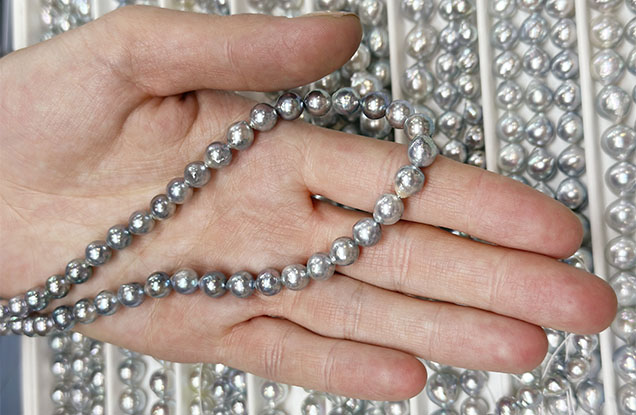
Eliko Pearl Company (New York City) displayed numerous strands of Vietnamese akoya BC pearls with bodycolors ranging from silver to light gray and light bluish gray with exceptional orient (figure 3). These provide a greater selection of colors compared to traditional akoya BC pearls. Some white, light cream, and cream pearls were also presented as unprocessed and untreated—steps normally used to improve appearance and alter color. However, many akoya BC pearls in the market have been processed to generate a classic white appearance. Vietnam has produced saltwater cultured pearls commercially since the 1990s and is expected to produce approximately 2,000 kg per annum (N. Sturman et al., “Vietnam: Shell nuclei, pearl hatcheries, and pearl farming,” Fall 2020 G&G, pp. 402–415), which is significantly smaller than Japan’s anticipated annual production of approximately 20 tons (roughly 18,000 kg) (T. Matsuyama et al., “Mass mortality of pearl oyster (Pinctada fucata (Gould)) in Japan in 2019 and 2020 is caused by an unidentified infectious agent,” PeerJ, Vol. 9, 2021, article no. 12180).
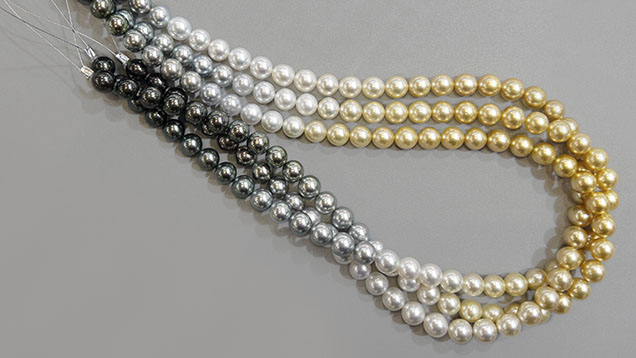
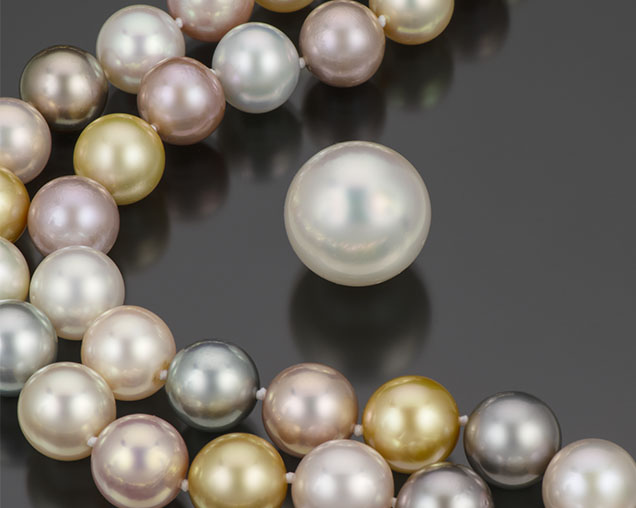
Eric Yen of Yen’s Jewelry & Accessories Inc. (San Francisco) and Alan Hakimian of Yoko London presented strands that combined multicolor pearls from different pearl types, offering variety and high fashion all at once (figures 4 and 5). Both pointed out that making mixed and graduated color strands is an efficient use of all the pearls produced from a harvest, just one example of economic sustainability in the pearl industry. Producing only perfectly matched color stands would lead to more waste.
Overall, pearl dealers are looking forward to the return of the gem, jewelry, and pearl shows in Hong Kong in 2023, as these are some of the largest shows for cultured pearls. Many have not been able to attend since 2019 due to lockdown restrictions in Hong Kong.



